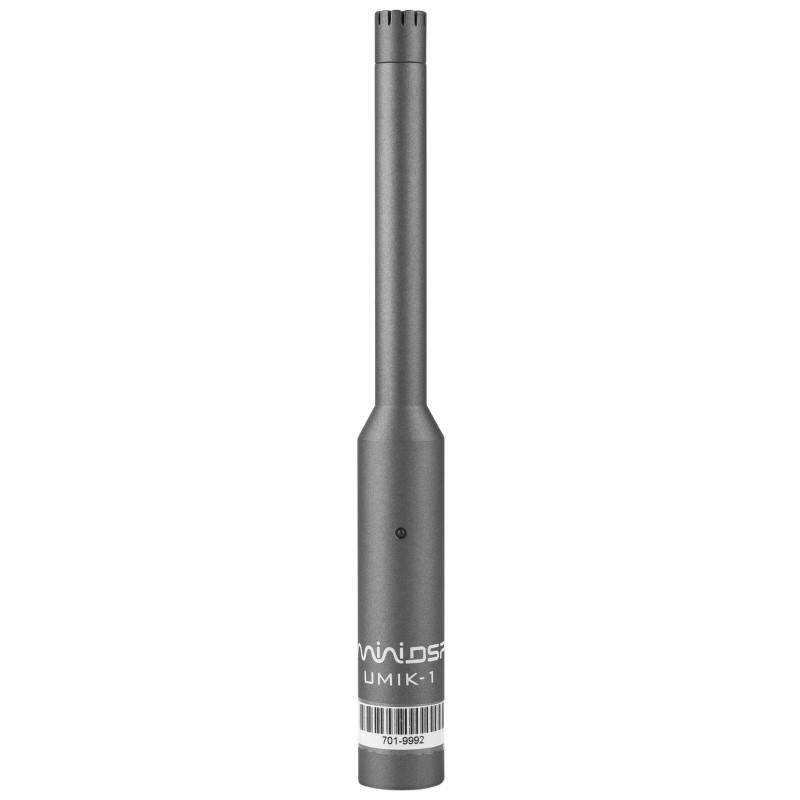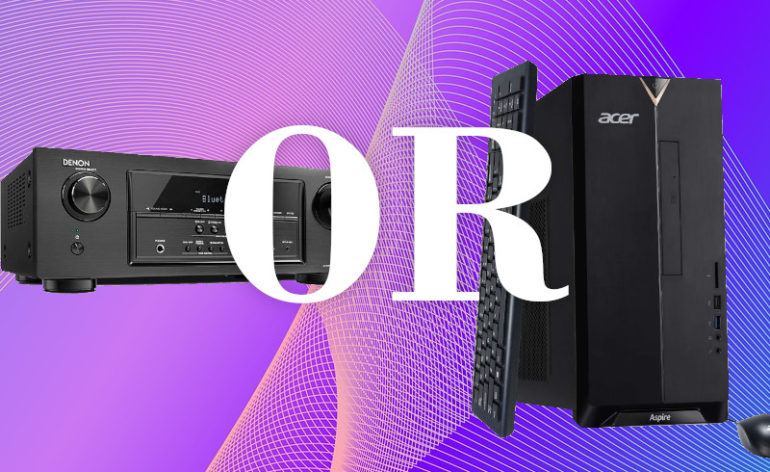PC as AV Receiver: Can It Be Done?
So recently, my editor has been assigning me articles challenging my traditional way of looking at home theater and audio. He’s been asking me if there is a different, less conventional, and possibly cheaper way of stepping up your audio game. It has forced me to step out of my comfort zone and look at my hobby from the perspective of someone who is just getting into AV and doesn’t have the budget to go whole-hog right away. So this week’s challenge? Can you use a PC as an AV receiver? Interesting – let’s discuss!
Why Use a PC as an AV Reciever?
I will have to admit that this one took me off guard. So why would you want to use a PC rather than a standard AV receiver? My initial reaction was to rattle off many reasons why an AV receiver would be the right choice. But then my editor told me to step back and think like a gamer, a broke college kid, or someone who has a limited budget or doesn’t need or want much.
Reason 1 – Space
So maybe you want to get better audio than a set of PC speakers, but you don’t have the space for a 17″ traditional AV receiver on your desk? Ok, I admit, that’s a valid reason. Not everyone values or has space for a big, chunky black box that takes up a ton of real estate. So if you are working from a desk or a small AV stand, you may not have a lot of extra space, and a small amplifier will give you more than enough power for your speakers.
Reason 2 – You Don’t Need The Features / Power
Again, a very valid point. Not everyone who wants to improve the sound of their PC wants a set of massive speakers or to run a 5.2.4 system. Maybe they sit near their speakers and need almost no power to get them loud. Or perhaps you want to upgrade from cheap gaming headphones to modest desktop speakers. The chances are that you won’t need all those extra features.
Reason 3 – Budget
Budget is a big reason to go small. I have been fortunate enough in recent years to be able to score some fantastic deals on used gear. Unfortunately, not everyone has a great used market around them, nor do they want to take a chance on some bum gear. Furthermore, some folks don’t have the means to buy brand-new or refurbished AV gear.
What You Will Need?
If the above sounds like you, then we are going to have to figure out what you have and what you’ll need to buy. You probably already have the PC, but you are going to need a way to bypass the traditional AV receiver in order to power some speakers.
PC Hardware
So, I think we laid out some solid reasons why a PC might be ideal for your use case. So what do we need? The first thing we need is a PC and a soundcard. Depending on the soundcard, you may have a straightforward stereo setup. It is also common to see a 5.1 output in both onboard and PCI soundcards. The bottom line is that you have options. At the very least you’ll have a headphone output. Hopefully, you’ll have more than that. What you are looking for is a soundcard that has multiple 3.5mm outputs. They can be used to feed a full surround sound system. If you don’t, you may be limited to stereo.

Speakers
Now, you need to select some speakers. A quick search of compact bookshelf speakers will give you many speaker options. But, be warned, with compact speakers, you will not get a lot of bass extension, and if you are adding a subwoofer, you will have limited options on a budget. This setup will presumably be nearfield, and you won’t need a ton of bass output to feel it, so I would stick with a small powered subwoofer for ease of connection.
There are just too many options for us to list which would be best for you. Just don’t discount buying used. You can score some great deals!
Moar Power
Ok, so now you need to power it all. There are several ways to do this. First, you need to figure out the output of your soundcard. For example, my 5.1 channel soundcard has a stereo left/right output and a single output for the center, left/right surround and subwoofer channels. We’ve seen many different configurations. Sometimes they will combine the left/right surround into a single 3.5mm port and the center and subwoofer into a second. Regardless, you will need five channels of amplification.
You can do this in several ways. A quick search on Amazon found me some relatively inexpensive two-channel amplifiers with RCA inputs. For instance, for about $230, I can get three of these Fosi amps. That is more than enough for our needs (you’ll have one channel of amplification left over).
You could also look for a multi-channel home amplifier. For example, I quickly found a Pyle six-channel home amplifier for less than $200 on Amazon. This amplifier will give me enough power for my setup, but it pushes the size limits.
Cables
Lastly, we will need some cables. The good news, this is the least expensive part of this entire endeavor. In the last 20+ years, every soundcard I have used 3.5mm analogue outputs, which makes it easy to find cables:
- You will likely need at least one 3.5mm-to-stereo RCA cable for any 3.5mm outputs that feed two speakers.
- For any 3.5mm output that feeds a single speaker, grab this 3.5mm-to-RCA mono cable.
- You will need a subwoofer or mono RCA cable for your powered subwoofer.
- You may need this RCA coupler to extend the cable to your subwoofer.
- Video cable to your display (likely HDMI). You probably already have this.
Hook It Up!
Regardless of which amplification method you chose, hooking it up is the same. Each amp has inputs and outputs. The inputs are RCA and the outputs are five-way binding posts that accept speaker cables. You’ll need to match the inputs to the correct speakers. Since I don’t know what soundcard you are using, I can’t tell you exactly which cables you will need but it will be fairly simple for you to figure out.

The subwoofer output is the only one that will be different. Since your subwoofer will likely have it’s own amp (if it doesn’t, I’d highly recommend you reconsider your subwoofer decision), you’ll connect that directly to the computer. Since you’ll likely need extra length, pick up the RCA coupler listed above to connect the output to a longer cable.
Lastly, connect your PC to your display with your video cable, and now you have sound and image!
Tuning It
The amplifiers have tone and bass dials, and your subwoofer will have both a gain and crossover dial. You can use an SPL meter on your phone to level match the speakers with the amplifier volume dials, and once matched, use the main volume of the PC to control them.
You can also use a third-party application for EQ. Some are free and have basic controls, while others are paid applications and give you access to more bands of EQ.

It does appear as if the DIRAC Live Windows or Mac plugin will allow you to use room correction software on your PC. Be aware, you would need a license to DIRAC Live, and a microphone like the UMIK-1 (buy it here for a fully calibrated version – we highly recommend it!). If you go this route, you could use the free software Room EQ Wizard (we have a tutorial here to get your started) to help dial in your system.
If this all sounds very complicated, it is. Modern AV receivers do all of this for you. This is definitely not a budget-friendly option. I would suggest that if you want to shell out the cash for a mic and room correction, you are better off getting a refurbished AV receiver with built-in room correction and amplification in one.
What It’s Not!
So let’s face facts, this is not a true AV receiver. It cannot add additional components and then switch through those inputs. It can only do what it does. It can game, stream from different services, and maybe play discs if you have the correct drive. But you won’t be able to add a standalone Ultra HD Blu-ray player or anything else.
On top of this, there might be some HDCP issues with Blu-ray drives or any external drives you may have. If you are streaming content, HDCP won’t be a concern. On top of that, PCs can be very noisy when running games and the fans need to ramp up to deal with added heat.
Most importantly, the analogue audio outputs on a PC are notoriously noisy. You may find that there is an audible hiss even when nothing is playing through the system. I’ve also had systems when I could hear my hard drive start to spin through my speakers. These are PC-specific problems you wouldn’t have with an AV receiver.
Our Take
I’ll be honest, when I was assigned this article, I thought that I would be telling you that this was mission impossible and would compromise too much. But once I took off my home theater and AV enthusiast blinders, I can honestly say that this is a pretty solid little setup that can grow with you.
If later you want to buy an AV receiver or upgrade your speakers? You can repurpose some of the compact bookshelf speakers as surround or height speakers. I can assure you that you could sell your amps and recover a fair amount towards your upgrade. And your PC can still be used with your AV receiver. If you connect digitally, any noise issues would be gone.
Using your PC as an AV receiver is not without its limitations, but it is viable. I think this is a solid choice for a low-cost solution to upgrading from PC speakers or a headset. If nothing else, it could be an intermediate step before moving your system to a larger room with a standalone AV receiver.
Have you used your PC as an AV receiver? Share your story below!


